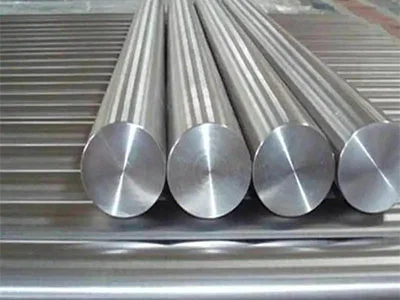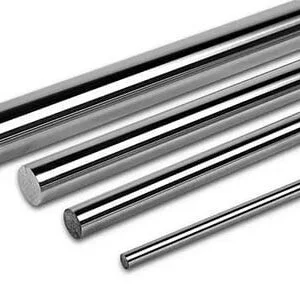Introduction

Stainless steel bars have long been lauded for their exceptional durability and resistance to corrosion, making them a popular choice for various applications, particularly in marine environments. In this blog post, we delve into the unique properties of stainless steel bars and explore their performance when exposed to the harsh conditions of marine settings.
Understanding Stainless Steel Bars
Stainless steel derive their exceptional corrosion resistance from the formation of a protective oxide layer on their surface, commonly referred to as the passive layer. This passive layer, primarily composed of chromium oxide, acts as a shield against corrosive elements present in marine environments, such as saltwater and atmospheric moisture.
Furthermore, the addition of alloying elements like nickel and molybdenum contributes significantly to the enhanced corrosion resistance of stainless steel. Nickel improves the stability of the passive layer, making it more resilient to breakdown in aggressive environments. Molybdenum, on the other hand, increases the alloy’s resistance to pitting and crevice corrosion, which are prevalent in chloride-rich marine conditions.
Corrosion Resistance in Marine Environments
The corrosive nature of marine environments, characterized by high levels of salt, humidity, and constant exposure to moisture, poses a significant challenge to metals. However, stainless steel exhibit remarkable resistance to corrosion in such conditions, thanks to their passive layer. This inherent resistance makes them suitable for a wide range of marine applications, including shipbuilding, offshore platforms, and marine infrastructure.
Factors Influencing Durability
While stainless steel boast impressive corrosion resistance, several factors can influence their durability in marine environments. These include the grade of stainless steel used, the design of the structure, exposure to pollutants, temperature fluctuations, and mechanical stress. Understanding these factors is crucial for ensuring the long-term performance of stainless steel bars in marine applications.
Case Studies: Real-world Applications
To illustrate the durability of stainless steel bars in marine environments, let’s examine some real-world applications:
- Shipbuilding: Stainless steel bars are extensively used in the construction of ship hulls, where they endure prolonged exposure to seawater and salt spray.
- Offshore Platforms: Stainless steel reinforcement bars provide structural integrity to offshore platforms, withstanding the corrosive effects of saltwater and harsh weather conditions.
- Marine Infrastructure: From bridges to seawater desalination plants, stainless steel bars play a vital role in marine infrastructure projects, offering longevity and reliability.
Performance Comparison: Stainless Steel Grades

| Stainless Steel Grade | Corrosion Resistance | Strength | Cost |
|---|---|---|---|
| 304 | High | Moderate | Low |
| 316 | Very High | High | Moderate |
| 316L | Very High | High | High |
FAQ
Q: Are all stainless steel bars equally resistant to corrosion in marine environments?
A: No, the corrosion resistance varies depending on the grade of stainless steel. Higher grades, such as 316 and 316L, exhibit superior resistance to corrosion compared to lower grades like 304.
Q: Can stainless steel bars corrode in stagnant seawater?
A: While stainless steel is highly resistant to corrosion, prolonged exposure to stagnant seawater can still lead to localized corrosion, especially in crevices and areas with restricted oxygen flow.
Q: How can the lifespan of stainless steel bars in marine applications be extended?
A: Proper maintenance, regular inspections, and choosing the right grade of stainless steel are essential for maximizing the lifespan of stainless steel bars in marine environments.
Conclusion
In conclusion, stainless steel bars are exceptionally durable and corrosion-resistant materials well-suited for marine environments. Their unique properties make them indispensable in various marine applications, providing longevity, reliability, and cost-effectiveness. By understanding the factors influencing their durability and proper maintenance practices, stainless steel can continue to thrive in the challenging conditions of the marine industry.
This blog post has explored the durability of stainless steel bars in marine environments, highlighting their corrosion resistance, factors influencing performance, real-world applications, and addressing common questions. As the demand for reliable and long-lasting materials in marine construction continues to grow, stainless steel bars remain a top choice for engineers and designers worldwide.
